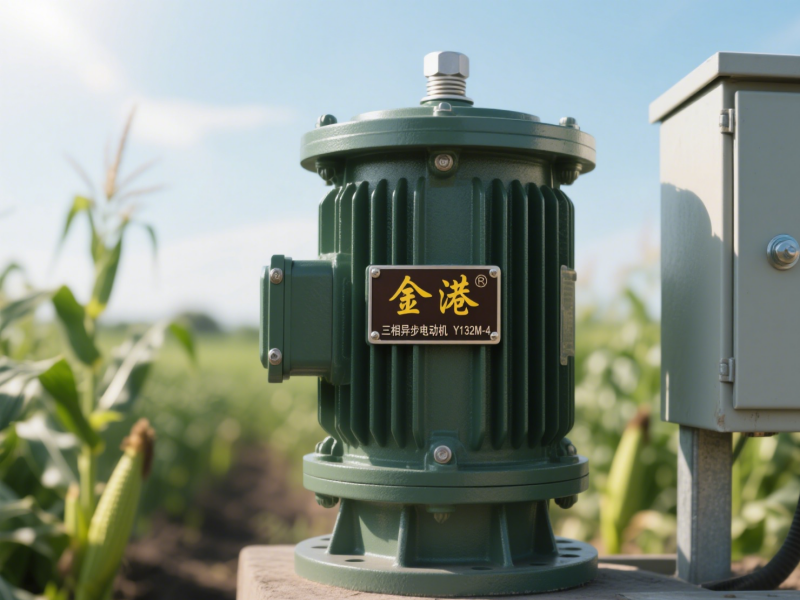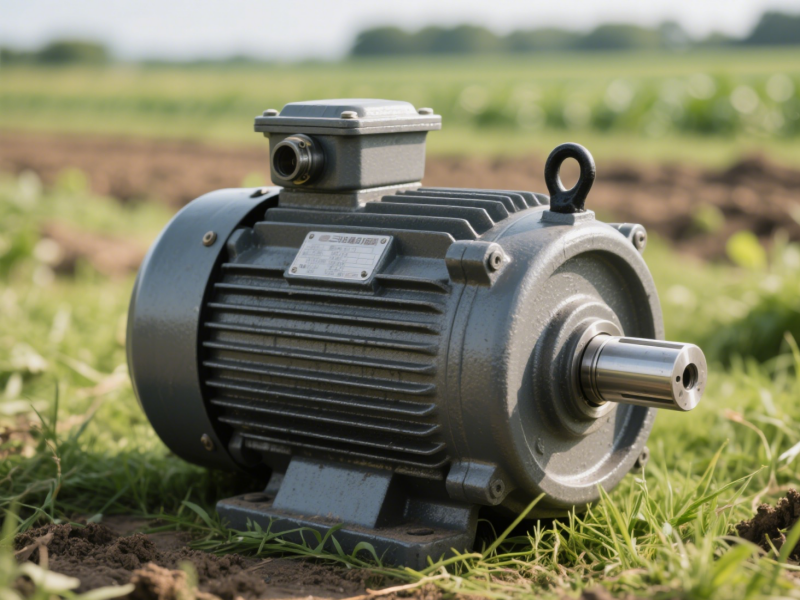Application characteristics and scenarios of three-phase asynchronous motors in agricultural motors
Application Characteristics of Three-Phase Asynchronous Motors in Agriculture
Adapting to Complex Power Supply Environments
Rural power grids experience significant voltage fluctuations. Three-phase asynchronous motors are highly tolerant of voltage fluctuations (allowing a ±10% voltage deviation). Even in remote areas with unstable power supply, they can maintain basic operation and meet the continuous needs of agricultural production (e.g., irrigation and drainage operations require no interruption).
High reliability and low maintenance requirements.
Agricultural production environments are often outdoors, humid, dusty, and subject to debris such as straw debris. Three-phase asynchronous motors lack vulnerable parts such as commutators and brushes. Their structural sealing performance can be optimized through protection levels (such as IP54 and IP55), effectively protecting against dust, water droplets, and corrosive gases, reducing environmental failures. Routine maintenance requires only regular cleaning and lubrication of the bearings, which farmers can perform without specialized skills.
Wide power range, compatible with a wide range of agricultural machinery.
Three-phase asynchronous motors offer power ratings ranging from 0.75kW (for small equipment) to hundreds of kW (for large irrigation and drainage stations). These motors are compatible with agricultural machinery of varying sizes, from threshers and pulverizers to large axial-flow pumps and combine harvester drive systems. This eliminates the need for complex custom designs and offers high versatility.
Flexible starting methods accommodate load-based starting requirements.
Many agricultural machines require load-based starting (e.g., submersible pumps start with water pressure in the pipe, or crushers start with material in the chamber). Three-phase asynchronous motors can be equipped with auto-coupling step-down starters, star-delta starters, or other devices to reduce starting current (to avoid impacting the power grid) while providing sufficient starting torque to ensure a smooth start.
Low cost and suitable for agricultural production economics
Compared to synchronous or DC motors, three-phase asynchronous motors have a manufacturing cost 30%-50% lower and higher operating efficiency (small and medium-sized motors can reach 75%-90%), which can reduce agricultural production costs. For agricultural production with limited profit margins, economic efficiency is a key factor.

Typical Application Scenarios of Three-Phase Asynchronous Motors in Agriculture
Irrigation and Drainage Systems
Applicable Equipment: Centrifugal pumps, submersible pumps, axial-flow pumps, mixed-flow pumps, etc.
Suitability: Pumps require continuous and stable operation (especially for irrigation in the dry season or drainage in the rainy season). The high reliability of three-phase asynchronous motors prevents drought or flooding caused by downtime. Furthermore, pumps do not require high speed stability (slight speed fluctuations in asynchronous motors do not affect pumping efficiency).
Power Range: Small irrigation pumps are equipped with 1.5-7.5kW motors, while axial-flow pumps in large irrigation and drainage stations can be equipped with 55-200kW motors.
Agricultural and Sideline Product Processing Machinery
Applicable Equipment: Threshers, crushers (for straw and feed), rice mills, oil presses, hay cutters, etc.
Suitability: These machines require frequent starts and stops, and their loads may fluctuate (for example, changes in the feed rate of a crusher). Three-phase asynchronous motors have a strong overload capacity (withstanding short-term overloads of 1.2-1.5 times the rated power) and are less susceptible to burnout due to sudden increases in load. Furthermore, high rotation speeds (typically 1450 rpm or 2900 rpm) meet processing efficiency requirements.
Typical power: 3-15 kW for threshers and 15-30 kW for large feed crushers.
Field Tillage and Harvesting Machinery
Applicable Equipment: Electric rotary tillers, seed drills, and small combine harvesters (electric drive).
Suitability: Field operations are bumpy and dusty. The enclosed structure of three-phase asynchronous motors (e.g., cast iron housing) protects against impact and impurities. Furthermore, with speed adjustment via a gearbox, they can meet the low-speed, high-torque requirements of tillage.
Power Characteristics: Mostly 5-20kW, suitable for small and medium-sized agricultural machinery (large tractors are still primarily diesel-powered, but the trend toward electrification is leading to an increasing use of three-phase asynchronous motors).
Supporting Equipment for Facility Agriculture
Applicable Equipment: Greenhouse roller shutters (controlling the opening and closing of greenhouse film), large ventilation fans, integrated water and fertilizer irrigation pumps, etc.
Suitability: Facility agriculture requires high operational stability for equipment (for example, a roller shutter failure could cause freezing or burns to crops inside the greenhouse). The low failure rate of three-phase asynchronous motors ensures continuous operation. Furthermore, variable frequency speed regulation (asynchronous motors are easily controlled by variable frequency) allows for precise control of roller shutter speed or fan air volume.
Livestock Farming Machinery
Applicable Equipment: Feed mixers, silage choppers, automatic manure cleaners, etc.
Suitability: Livestock farming environments may contain corrosive gases such as ammonia. Anti-corrosion treatment of three-phase asynchronous motors (such as coating the windings with corrosion-resistant paint) can extend their service life. Furthermore, actions such as mixing and chopping require stable torque output, which asynchronous motors can meet.
Summary
Three-phase asynchronous motors, with their environmental resistance, ease of maintenance, low cost, and wide power range, are perfectly suited to the diverse, high-intensity, and complex environmental demands of agricultural production, becoming the primary power source for irrigation, processing, and tillage. With the advancement of agricultural electrification, high-efficiency, energy-saving three-phase asynchronous motors (such as those with IE3 and IE4 energy efficiency ratings) are gradually replacing traditional products, reducing agricultural energy consumption while further consolidating their core position in agricultural motors.




